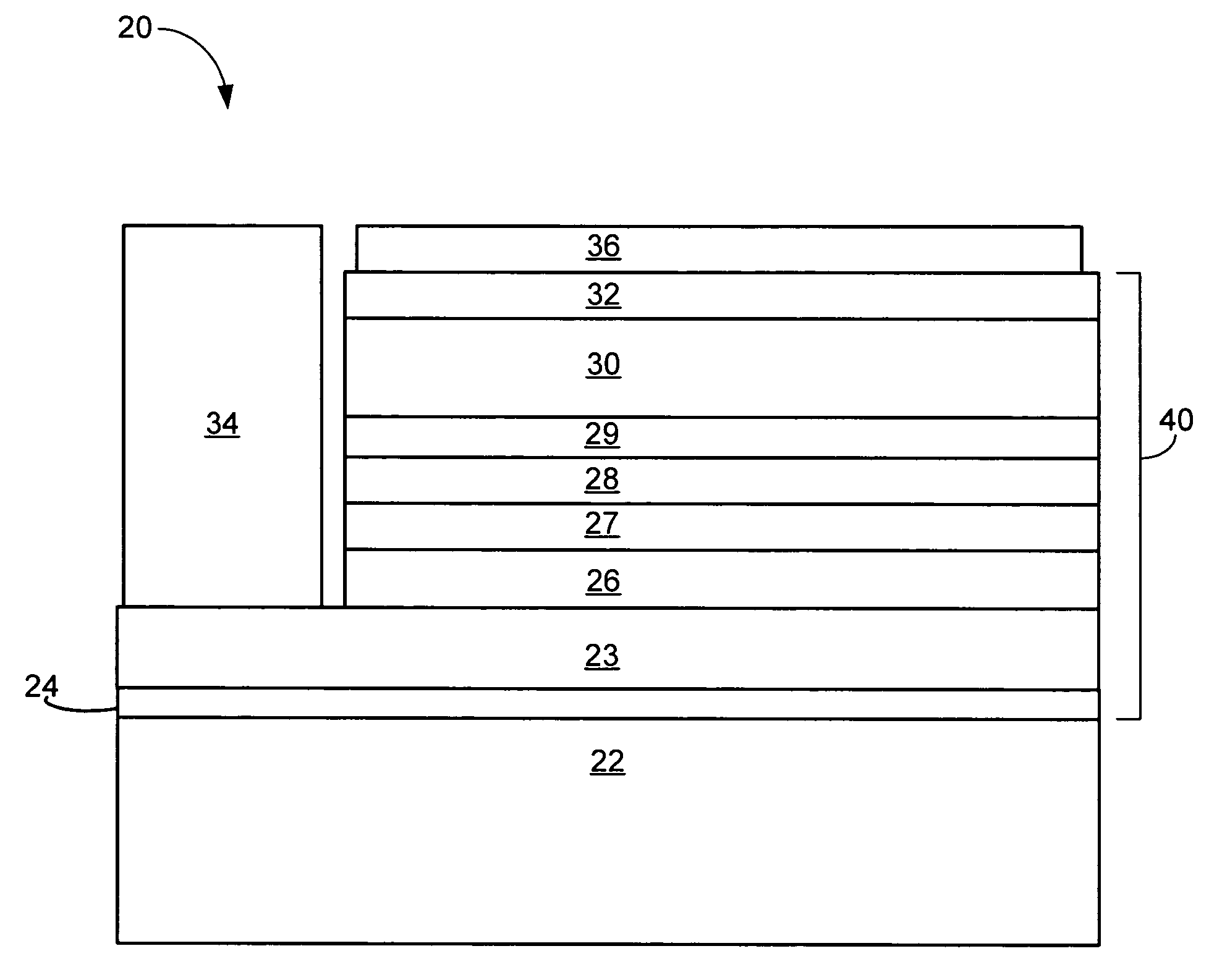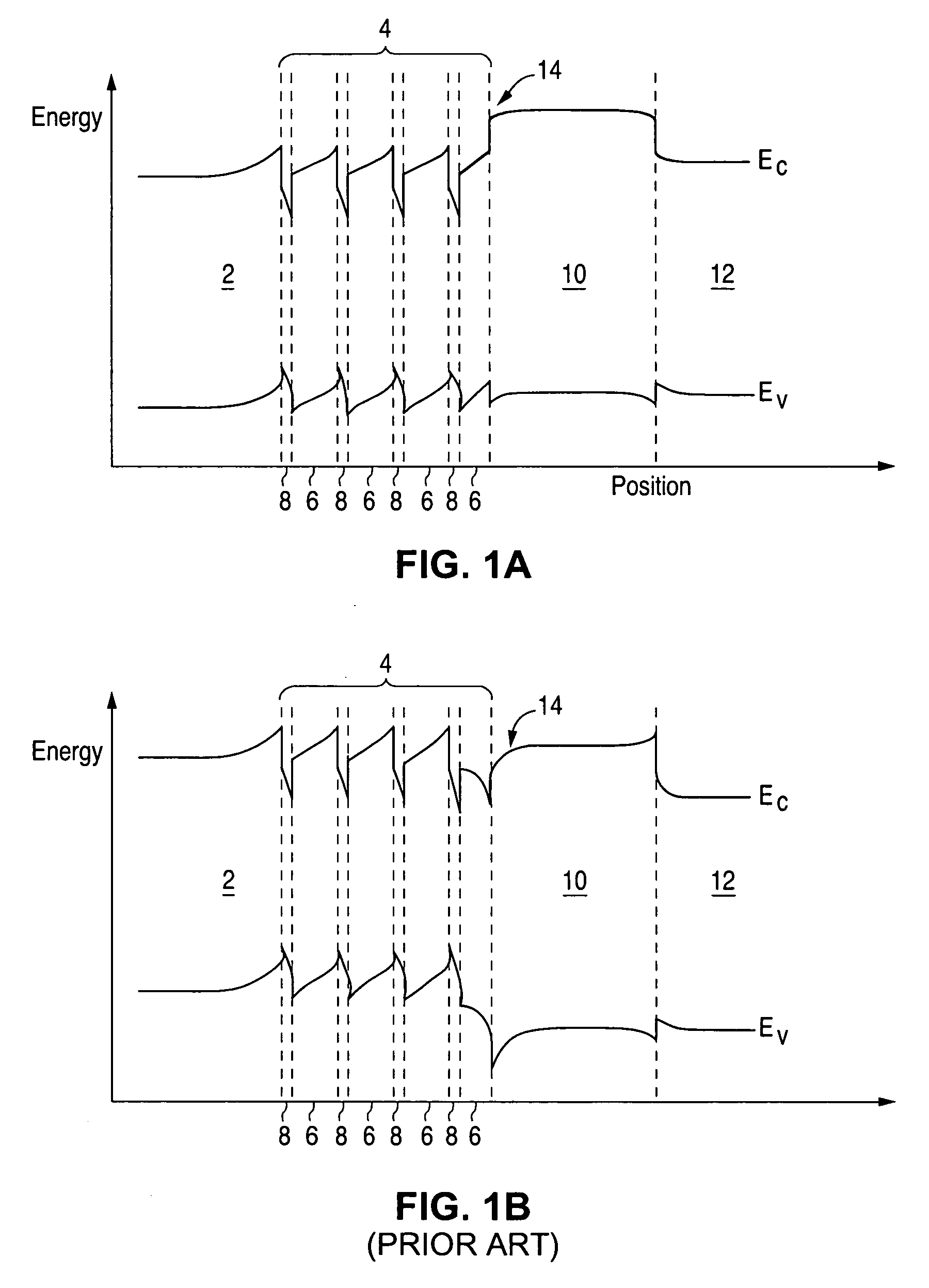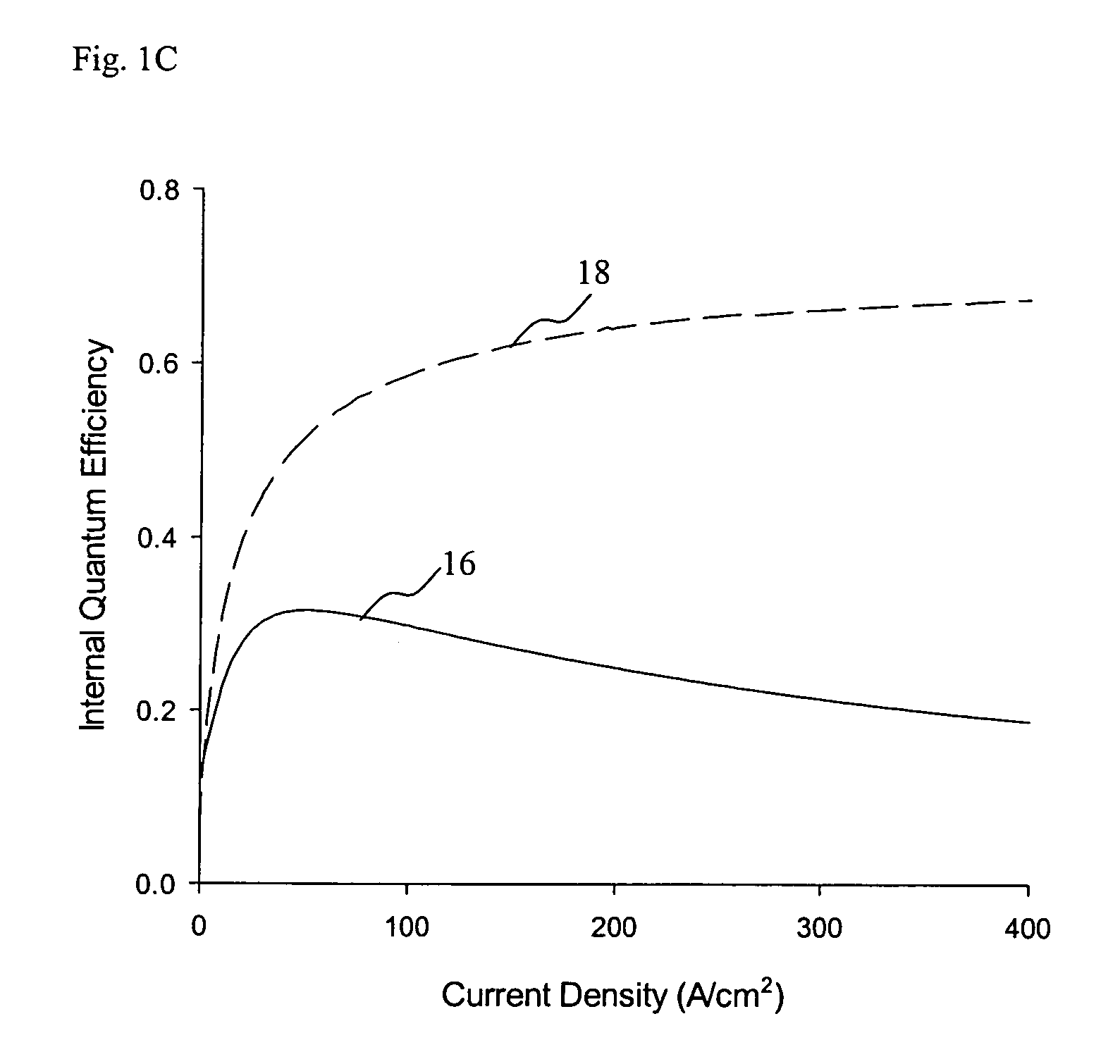III-nitride light-emitting devices with improved high-current efficiency
a technology of iiinitride and light-emitting devices, which is applied in the field of improving the quantum efficiency of iiinitride light-emitting devices, can solve the problems of reducing the confinement of holes and hence quantum efficiency, and the simulation is not physically realistic, so as to achieve the reduction of polarization, the effect of reducing the polarization and advantageously increasing the efficiency
- Summary
- Abstract
- Description
- Claims
- Application Information
AI Technical Summary
Benefits of technology
Problems solved by technology
Method used
Image
Examples
Embodiment Construction
[0030]Several embodiments are disclosed in which polarization fields are reduced in electron and / or hole confinement layers in III-Nitride light-emitting devices. Confinement of electrons and holes in the active regions of these devices may thereby be improved. This can result in devices with improved quantum efficiency. The III-Nitride light-emitting devices described may be, for example, light-emitting diodes or laser diodes.
[0031]In one embodiment (FIG. 2), a III-N based LED 20 includes a sapphire substrate 22, a nucleation layer 24, an optional n-type III-Nitride contact layer, an n-type III-Nitride hole confinement layer 26, a III-Nitride active region 28, a p-type III-Nitride electron confinement layer 30, and an optional p-type III-Nitride contact layer 32. Active region 28 includes one or more quantum well layers and one or more barrier layers. Active region 28 may be spaced apart from electron confinement layer 30, hole confinement layer 26, or both by optional spacer layer...
PUM
 Login to View More
Login to View More Abstract
Description
Claims
Application Information
 Login to View More
Login to View More - R&D
- Intellectual Property
- Life Sciences
- Materials
- Tech Scout
- Unparalleled Data Quality
- Higher Quality Content
- 60% Fewer Hallucinations
Browse by: Latest US Patents, China's latest patents, Technical Efficacy Thesaurus, Application Domain, Technology Topic, Popular Technical Reports.
© 2025 PatSnap. All rights reserved.Legal|Privacy policy|Modern Slavery Act Transparency Statement|Sitemap|About US| Contact US: help@patsnap.com



